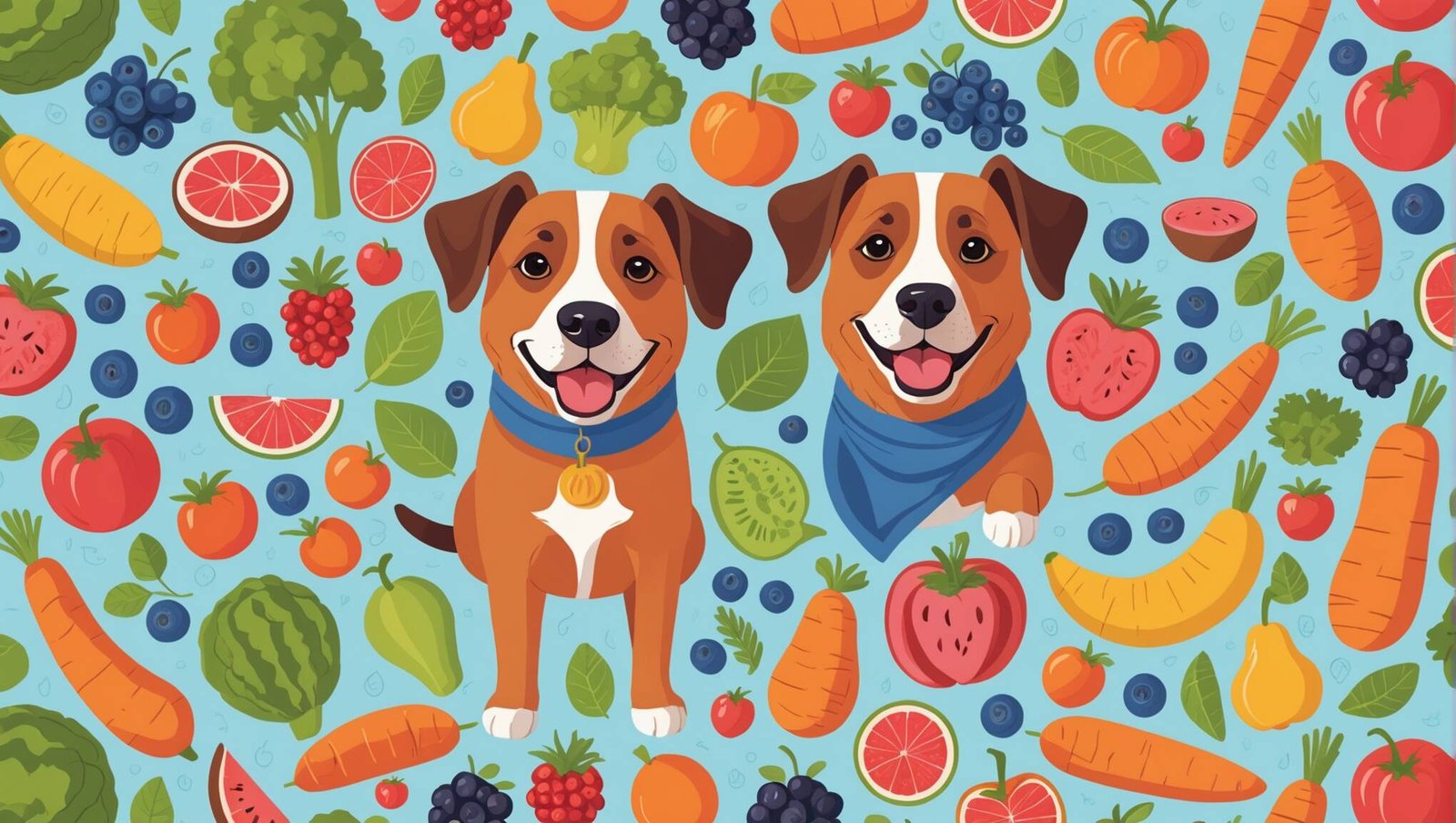10 Healthiest Fruits & Veggies for Dogs [Vet-Approved]
As loving pet owners, we’re always on the lookout for ways to boost our furry friends’ health and happiness. One of the best ways to do this is by incorporating nutritious fruits and vegetables into their diet. In this article, we’ll explore the 10 best fruits and vegetables for dogs, all vetted and approved by canine nutrition experts. These tasty treats not only provide essential vitamins and minerals but can also serve as healthy alternatives to commercial dog treats.
1. Carrots
Crunchy and sweet, carrots are an excellent low-calorie snack for dogs. They’re packed with beta-carotene, which is great for eye health, and their texture helps clean your dog’s teeth. Serve them raw or lightly steamed, cut into bite-sized pieces to prevent choking.
2. Blueberries
These tiny powerhouses are bursting with antioxidants, which can help fight cell damage and boost your dog’s immune system. They’re also low in calories, making them perfect for dogs watching their weight. Frozen blueberries can be a refreshing summer treat!
3. Sweet Potatoes
Loaded with vitamins A, B6, and C, sweet potatoes are a nutritious addition to your dog’s diet. They’re also rich in fibre, which aids digestion. Always serve them cooked and in moderation, as they’re high in natural sugars.
4. Apples
Apples are a crunchy, refreshing treat that most dogs love. They’re high in vitamins A and C, and the skin provides a good dose of fibre. Remember to remove the seeds and core, as these can be harmful to dogs.
5. Green Beans
Low in calories but high in nutrients, green beans are an excellent choice for dogs. They’re rich in iron and vitamins K and C. You can serve them raw, steamed, or even frozen for a cool treat on hot days.
6. Pumpkin
Pumpkin is a superfood for dogs. It’s high in fibre and can help with both diarrhoea and constipation. It’s also packed with vitamins A and C. Use plain, canned pumpkin (not pie filling) or cook and puree fresh pumpkin.
7. Cucumber
For dogs watching their waistline, cucumbers are an ideal snack. They’re very low in calories but high in water content, making them great for hydration. They also contain vitamins K and C.
8. Spinach
This leafy green is a nutritional powerhouse, rich in iron, vitamins A, B, C, and K. It’s also high in antioxidants. Serve it lightly steamed or finely chopped and mixed into your dog’s regular food.
9. Banana
Bananas are a great source of potassium, vitamins, biotin, fibre, and copper. They’re also low in cholesterol and sodium. However, due to their high sugar content, they should be given as an occasional treat.
10. Watermelon
On a hot day, few things are as refreshing as watermelon. It’s mostly water, making it excellent for hydration, and it’s also rich in vitamins A, B6, and C. Always remove the seeds and rind before serving.
Serving Tips and Precautions
While these fruits and vegetables are generally safe for dogs, it’s important to introduce any new food slowly and in moderation. Always consult with your veterinarian before making significant changes to your dog’s diet, especially if your pet has any health conditions or dietary restrictions.
Remember to wash all produce thoroughly to remove any pesticides or harmful bacteria. Cut fruits and vegetables into appropriately sized pieces to prevent choking, especially for smaller dogs.
It’s also crucial to know which foods are dangerous for dogs. Avoid feeding your pet grapes, raisins, onions, garlic, and avocados, as these can be toxic to dogs. When in doubt, always err on the side of caution and consult a professional.
Incorporating these healthy fruits and vegetables into your dog’s diet can be a great way to boost their nutrition and provide tasty, low-calorie treats. However, it’s important to remember that these should complement, not replace, a balanced dog diet tailored to your pet’s specific needs.
By offering a variety of these vet-approved fruits and vegetables, you’re not only providing your furry friend with essential nutrients but also adding excitement to their meals. This can be especially beneficial for picky eaters or dogs who need to lose weight.
Remember, every dog is unique, and what works for one may not work for another. Pay attention to how your dog reacts to new foods and adjust accordingly. With a little experimentation and guidance from your vet, you can find the perfect combination of fruits and vegetables to keep your canine nutrition on track and your pup’s tail wagging.
FAQ
How much fruit and vegetables should I give my dog daily?
The amount of fruits and vegetables you should give your dog depends on their size, age, and overall health. As a general rule, treats (including fruits and vegetables) should make up no more than 10% of your dog’s daily caloric intake. Always start with small amounts and consult your veterinarian for personalised advice.
Can dogs eat fruit and vegetable peels?
It depends on the fruit or vegetable. Some peels, like those of apples, can be beneficial in moderation. However, others, like banana peels, can be difficult to digest. Always remove peels that are tough or waxy, and when in doubt, it’s safer to peel the produce before feeding it to your dog.
Are there any fruits or vegetables that are toxic to dogs?
Yes, some fruits and vegetables can be harmful or even toxic to dogs. These include grapes, raisins, onions, garlic, avocados, and the green parts of tomatoes and potatoes. Always research or consult with your vet before introducing a new food into your dog’s diet.


